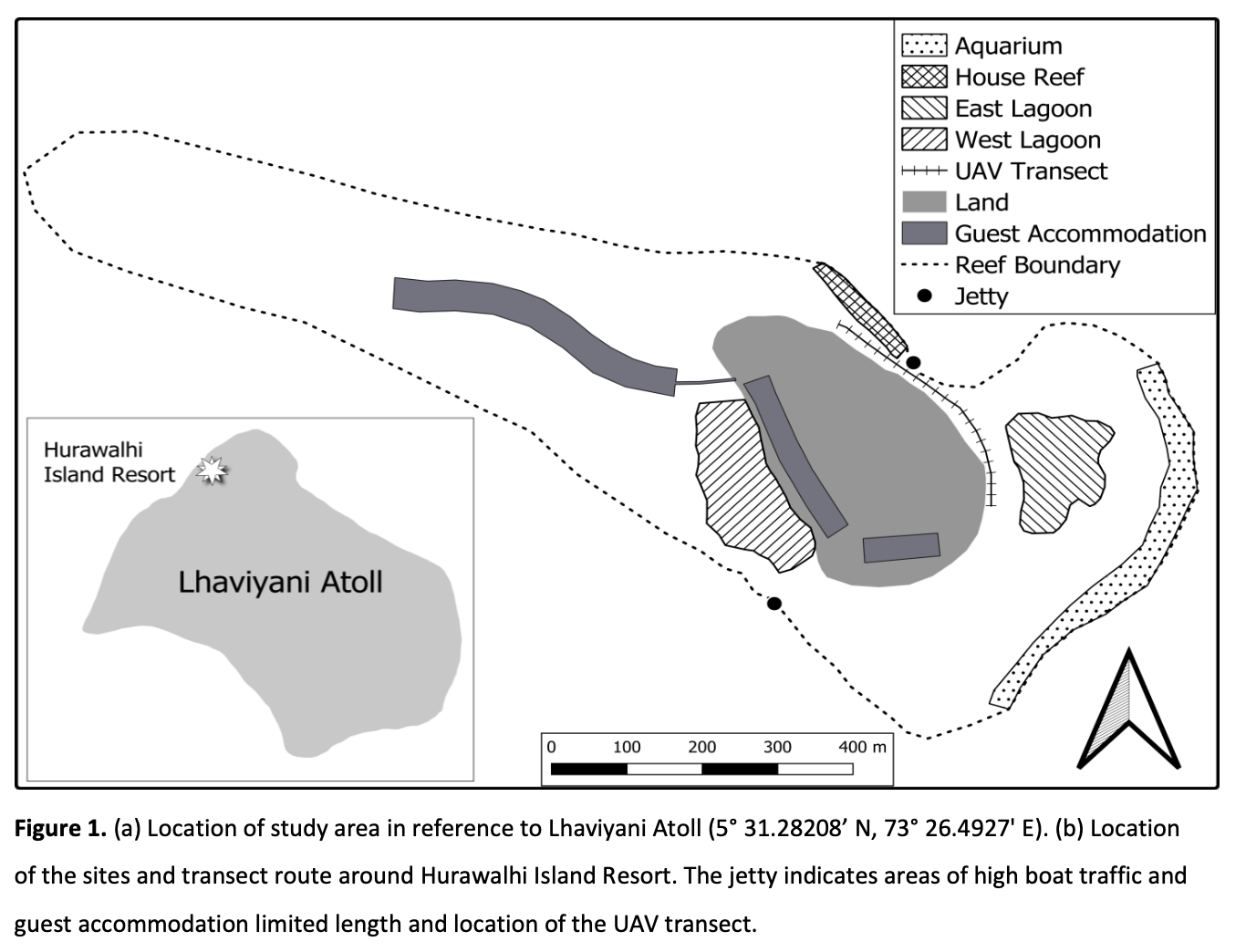Assessing elasmobranch populations at Hurawalhi Island Resort (Maldives)
2023
Francesca Waters (MSc Marine Conservation - University of Plymouth)


Summary: This paper presents information on elasmobranch communities surrounding Hurawalhi Island Resort, Lhaviyani Atoll (Maldives). The study suggests low diversity, with higher species diversity in the lagoon habitat types. Factors influencing their abundance were investigated, highlighting the impact of time of day on their activity. The study proposes methods to protect these species, emphasising the need for long-term monitoring and understanding local environmental changes, particularly in response to climate stressors.
Executive Summary
“Following elasmobranch (shark and ray) global declines, sanctuaries (no-take marine reserves) have been designated as a conservation measure. The Maldives shark and ray sanctuary was implemented in 2010 to stop the rapid decline of shark species, caused primarily from overfishing of the region's multiple shark fisheries. The paucity of monitoring data since the implementation has impacted the ability to determine the efficacy of the sanctuary. Baseline data is crucial to begin long-term monitoring to assess changes in community dynamics and, therefore, to determine species recovery. Understanding the influence of environmental variables is also useful to improve localized conservation measures for these species.
This paper presents information on elasmobranch communities surrounding Hurawalhi Island Resort, Lhaviyani Atoll (Maldives). Hurawalhi Island Resort is surrounded by lagoon, reef, and sandflat habitat types where elasmobranchs are frequently sighted. Over a 6-week period, four sites were surveyed using the roving diver technique that targeted lagoon and reef habitat types. From 170 sightings, ten species were identified, including three sharks (Carcharhinus melanopterus, Carcharhinus amblyrhynchos, and Nebrius ferrugineus), four stingrays (Pastinachus sephen, Urogymnus asperrimus, Pateobatis jenkinsii, and Taeniura meyeni), two mobula rays (Mobula kuhlii and Mobula alfredi), and one eagle ray (Aetobatus ocellatus). Shannon Weiner Diversity Index (0.44), mean species richness (1.67), and Pielou’s evenness (0.67) were recorded. These values suggest a low elasmobranch diversity according to the index as well as in comparison to other elasmobranch community research. The lagoon habitat type was found to have higher elasmobranch diversity (0.54) compared to the reef habitat type (0.35). However, with further investigation, differences in diversity values within the habitat types varied greatly. This indicates that the habitat type was not an influential factor for species diversity, and instead, it is suggested that prey abundance in each site holds higher importance. It should be noted that nine species of the species recorded are listed in the Threatened categories in the IUCN Red List, indicating Hurawalhi Island Resort's current importance to these species. These diversity indices can be applied to calculate long-term changes of species diversity in future monitoring of the study area.
Relative abundance calculations of 1.68 elasmobranchs/hour, 1.55 sharks/hour, and 1.15 rays/hour were recorded. The influence of the following environmental variables on relative abundance was investigated: tidal phase, tide height, tidal range, moon phase, time of day, temperature, wind direction, and speed. The time of day emerged as the only significant environmental predictor impacting elasmobranch abundance. Higher activity rates at crepuscular periods were associated with (1) foraging behavior due to their sensory advantage in low light conditions compared to prey species and (2) movement into shallow warmer water to aid with digestion. Disturbance during these periods may impact daily energetic budgets and, therefore, reducing anthropogenic activity should be considered in the construction of resort conservation strategies. Other environmental variables should be reassessed at the species level when the sample size increases with future monitoring.
Unmanned remote vehicle surveys have proven effective to offer insights into elasmobranch diversity and density in shallow sandflat habitats. Only C. melanopterus was identified in this habitat, calculating a mean density of 0.656 individuals/km² (SE 0.13). The majority of C. melanopterus detected were juveniles (<100cm), ranging from 38.1 cm - 114.4 cm with a mean total length of 57 cm. The shallow sandflat habitat was identified as a key habitat for juvenile C. melanopterus, which was assumed to be utilized to minimize the risk of predation. The high temperatures experienced by habitats with shallow water depth may rise over juvenile C. melanopterus thermal tolerance as a result of climate change. Ultimately, this may impact survival rates and, therefore, the C. melanopterus population. Introduction of shading to the sandflat habitat around the island could be explored to reduce water temperature while maintaining the predation protection provided by the shallow water depth.
Overall, this work demonstrates a relatively simple methodology to assess elasmobranch communities and populations, generating baseline data for long-term monitoring. Assessing spatial distribution and the drivers of movement on a local scale will be valuable in understanding species' responses to future changes in environmental conditions in the context of stressors such as climate change.”
Author Affiliations
University of Plymouth
The Manta Trust
Maldives Manta Conservation Programme
